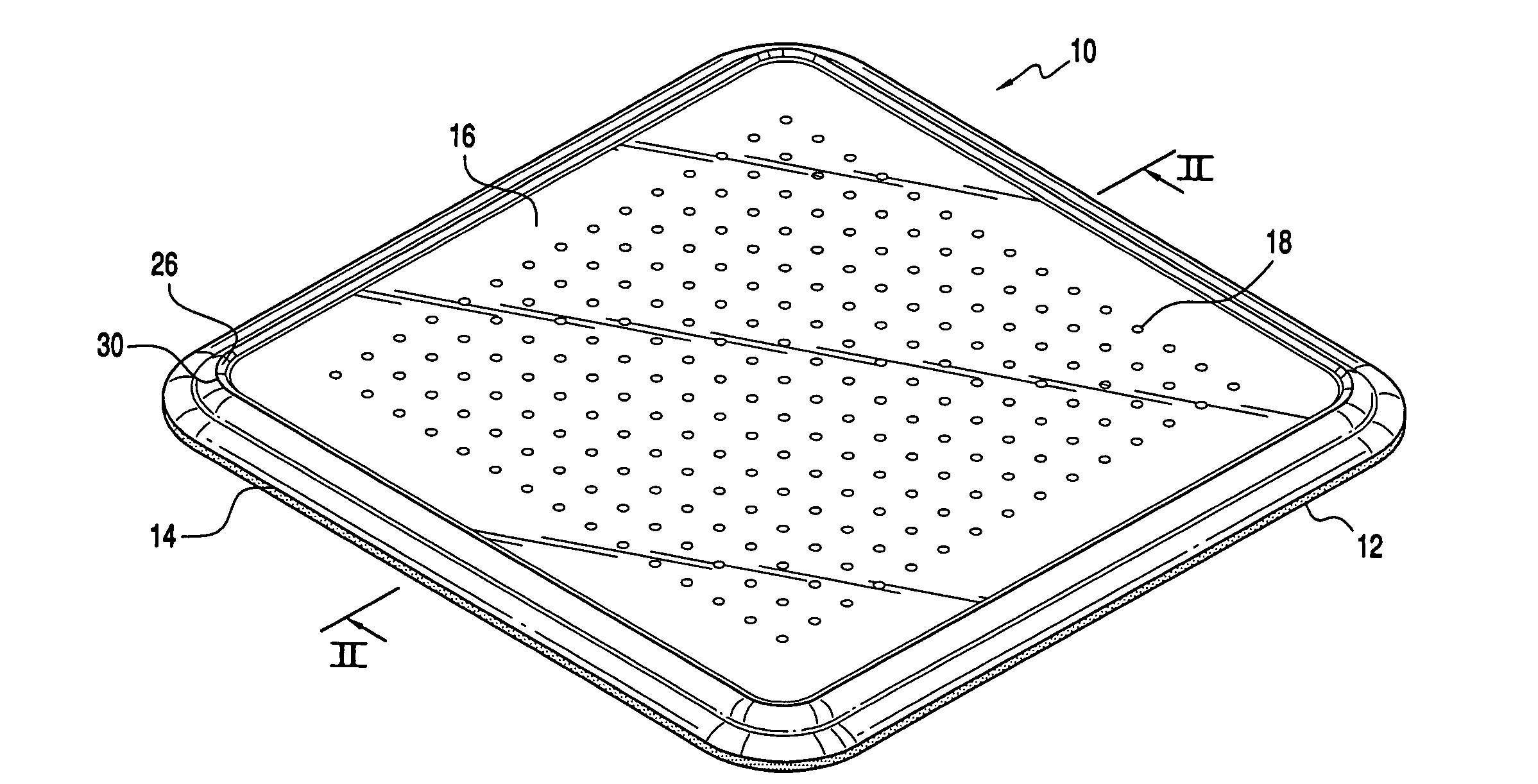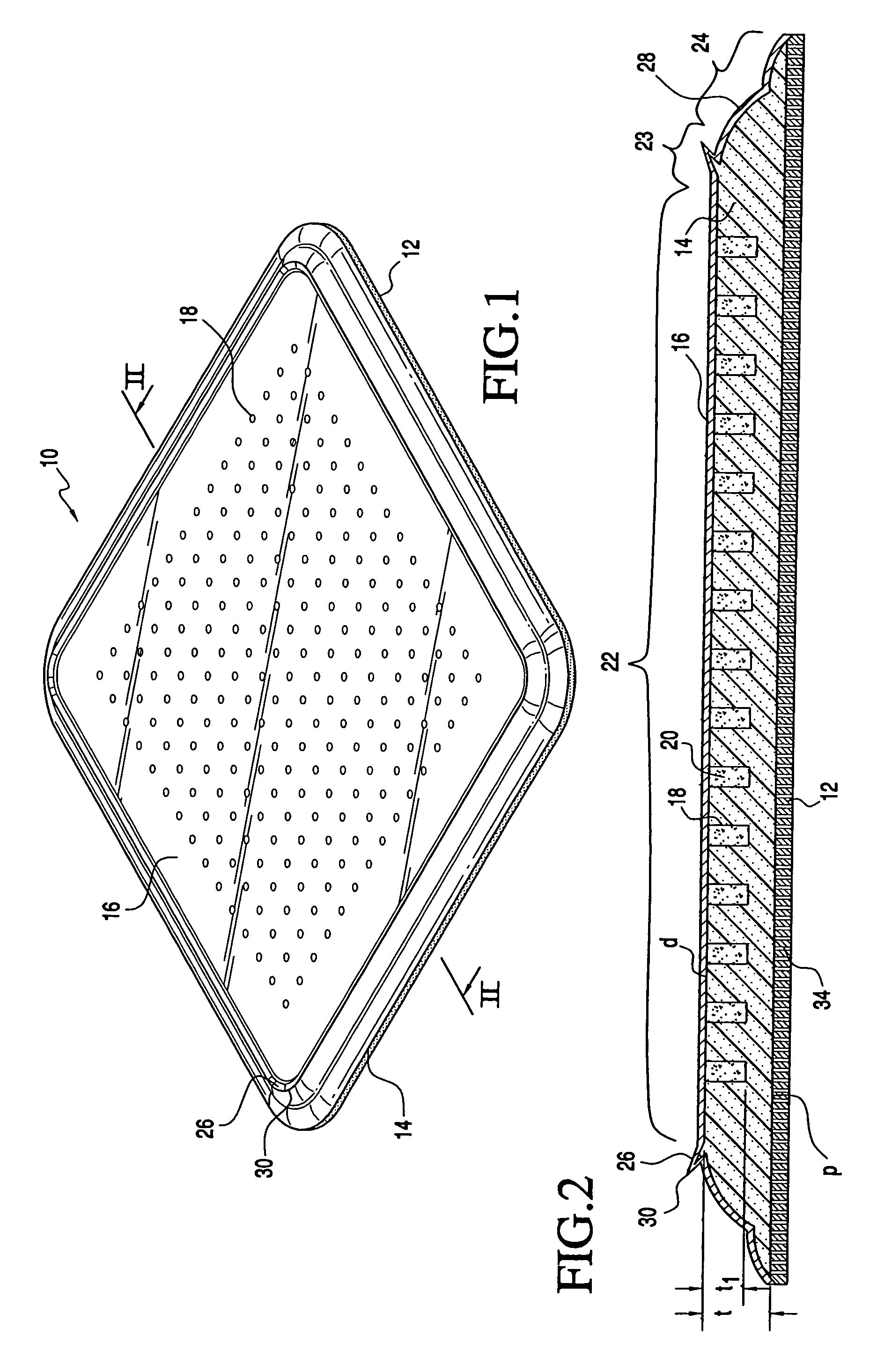Wound dressing
a wound dressing and wound technology, applied in the field of wound dressings, can solve the problems of increasing the risk of bacterial proliferation, limiting the amount of exudate that can be absorbed, and many limitations or disadvantages
- Summary
- Abstract
- Description
- Claims
- Application Information
AI Technical Summary
Benefits of technology
Problems solved by technology
Method used
Image
Examples
Embodiment Construction
[0042]As shown in FIGS. 1 and 2, the wound dressing 10 of the present invention preferably includes a perforated hydrophobic, skin adherent facing layer 12, an absorbent core 14, and a liquid impervious, moisture permeable backing layer 16. The wound dressing depicted in FIG. 1 is in a dry state substantially devoid of moisture. As more fully exemplified in FIG. 2, the absorbent core 14 defines a proximal surface p that is intended to face towards a wound surface w and a distal surface d that is opposed to the proximal surface p and faces away from a wound surface. In a basic configuration, the dressing 10 comprises the facing layer 12 secured to the proximal surface p of the absorbent core 14 and the backing layer 16 attached and sealed to at least part of the distal surface d of the absorbent core 14.
[0043]In a preferred embodiment, the absorbent core 14 defines a plurality of receptacles 18 arranged in a predetermined pattern wherein the receptacles 18 are defined as a repeating ...
PUM
| Property | Measurement | Unit |
|---|---|---|
| elongation | aaaaa | aaaaa |
| cell size | aaaaa | aaaaa |
| cell size | aaaaa | aaaaa |
Abstract
Description
Claims
Application Information
 Login to View More
Login to View More - R&D
- Intellectual Property
- Life Sciences
- Materials
- Tech Scout
- Unparalleled Data Quality
- Higher Quality Content
- 60% Fewer Hallucinations
Browse by: Latest US Patents, China's latest patents, Technical Efficacy Thesaurus, Application Domain, Technology Topic, Popular Technical Reports.
© 2025 PatSnap. All rights reserved.Legal|Privacy policy|Modern Slavery Act Transparency Statement|Sitemap|About US| Contact US: help@patsnap.com



